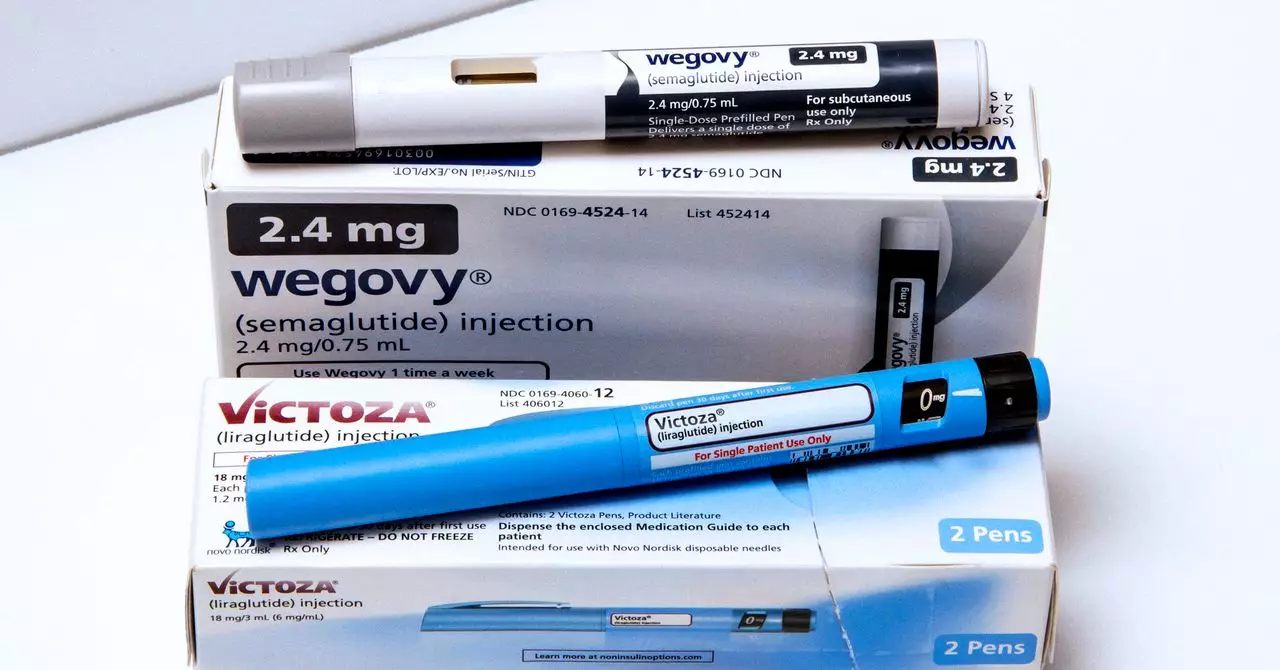The landscape of weight management solutions and diabetes therapies has shifted dramatically as patient needs and regulatory frameworks evolve. As telehealth startups previously championed GLP-1 medications like Ozempic and Zepbound, a recent FDA ruling has forced a reckoning, forcing many of these companies to pivot to the older, less heralded liraglutide. It’s fascinating that an older drug is now gaining attention as a treatment method even though it lacks the clinical glamour of its more recent counterparts.
Liraglutide, which has been available in the U.S. since 2010, was previously marketed under the brand names Saxenda and Victoza. It mimics the actions of GLP-1, a hormone that controls appetite and insulin secretion. However, it does have some glaring downsides—its injectable administration is required on a daily basis as opposed to the weekly dosages offered by newer medications. So, amidst this wave of innovation, why has liraglutide resurfaced as a point of interest for telehealth companies?
Regulatory Shifts and Market Responses
The FDA’s recent decision to declare that the shortages of semaglutide and tirzepatide had ended has put many telehealth companies in a precarious position. Their previous business models, heavily reliant on selling compounded versions of these medications, have been rendered obsolete. As a result, many companies are now embracing liraglutide as a viable, albeit inferior, alternative.
This transition has not been seamless; some firms, such as Hims, have swiftly integrated generic liraglutide into their offerings, while others are scrambling to repurpose their supply chains. In contrast, large compounding pharmacies like Olympia Pharmaceuticals are positioning themselves for a surge, stating that they’ve secured substantial contracts to produce liraglutide. The ability to fill this gap in the market by offering a medication that continues to be available can only be seen as a strategic advantage.
Understanding Liraglutide’s Mechanism
In understanding liraglutide’s appeal for both patients and telehealth companies, we need to look at its mechanistic advantages despite its shortcomings. While it doesn’t work as effectively as semaglutide or tirzepatide, liraglutide remains an option for weight loss and glucose management, especially for those who might face barriers to accessing newer medications. Its presence in the market since 2010 means that there is a more extensive body of research and clinical data available for practitioners to consider when prescribing it.
However, one must question the ethics of marketing liraglutide under the current circumstances. With it being less effective and associated with more severe side effects, is it truly responsible for telehealth companies to promote this drug so vigorously? Ah, the age-old balance of business prospects against ethical considerations in the healthcare industry—the fight between profit and patient well-being reignites yet again.
Market Saturation and Consumer Perception
Another avenue to explore is how consumer perception will evolve as liraglutide becomes more popularized. Online clinics and pharmacies have managed to cater to a market hungry for affordable weight management solutions. However, will these consumers view liraglutide in the same light as its more effective counterparts? The stigma surrounding older medications may pose a challenge in gaining consumer traction. After all, the allure of a “breakthrough” must rank high in patients’ collective consciousness.
An emerging concern is the legality of compounded medications. While some telehealth companies claim to offer customized versions of liraglutide by tweaking doses or adding ingredients like vitamins, this ambiguity places them at risk of legal repercussions. Increased scrutiny from pharmaceutical companies has begun, signaling a possible tightening of regulations around compounded drugs. The question looms: will these companies continue risking legal challenges in the pursuit of profit?
A Call to Ethical Action
In a world rife with quick fixes and instant gratification, the medical community must grapple with the underlying motives of promoting older, potentially less effective treatments over revolutionary drugs. While liraglutide might serve as a temporary band-aid for telehealth companies scrambling for relevance, the industry must prioritize patient outcomes over market share. If liraglutide is to be marketed effectively, it should be positioned as a bridge for those in need rather than as a solution desperate for acceptance.
Therefore, as we witness the reinvention of liraglutide within the online clinic realm, the ethical dynamics of this transition must remain in the limelight. The implications of marketing older, less effective drugs should be closely examined to ensure that patient care remains the primary focus. In a system so often driven by profit, it is a profound responsibility for telehealth companies to navigate these waters with integrity.

